Strolling along the moat of Yangzhou
In recent years, I have come and gone many times in Yangzhou due to work. I used my free time to take a closer look at the streets and alleys of Yangzhou, which was introduced in my travel series "Going to Yangzhou to Visit a Door". Don't give up traveling to Yangzhou this time! This time I stayed at the Ji Hotel (Slender West Lake Dongguan Street Branch). The hotel is located in the city center, only 100 meters away from Yangzhou's landmark Siwang Pavilion. When we have free time, we set off from the hotel and traveled through the beautiful Yangzhou. If there is no purpose, it is walking, because the beauty of Yangzhou is not just because of the attractions. The beauty of Yangzhou City is the beauty of details and the beauty that seeps out from the inside and outside. Beauty is everywhere. It's easy for me to keep a running account, so just follow my running account and walk around Yangzhou casually!
D1:
Walking method: Walking
Walking directions: Ji Hotel (Slender West Lake Dongguan Street Store)-Zhenhuimen Ruins-Erdao River-Ancient Mulanyuan Stone Tower-Wenchang Pavilion-Siwang Pavilion-Quanji Hotel (Slender West Lake Dongguan Street Store)
Zhenhuaimen Site
Address: 50 meters south of the intersection of Beimenwai Street and Dahongqiao Road
Ji Hotel (Slender West Lake Dongguan Street Branch) set off and walked north along Wenhe North Road to the Zhenhuimen Ruins next to the moat. Yangzhou's history developed into the Ming Dynasty, there were two divisions: an old city and a new city. The old city was built from the end of the Yuan Dynasty to the 17th year of the Zheng Dynasty. Five city gates were opened in the old city: Haining Gate (East Gate), Tongsi Gate (West Gate), Anjiangmen Gate (South Gate), Zhenhuai Gate (North Gate), and Xiaodong Gate. The Zhenhuai Gate here is one of the city gates. A moat running east-west in front of the city gate.

Stop here for a while and choose whether to go left or right. Turn right today, turn left tomorrow. There are dense trees on the river, with diagonal branches, protecting the not-too-wide water surface, and antique buildings are scattered among them. It looks more and more peaceful and elegant.

A water-friendly trail paved with small square bricks for leisure and fitness is accompanied by a moat. The winding paths along the river and the blurred vegetation and trees give me a feeling of illusion and reality. Walking quietly along the moat and enjoying the tranquility is naturally a pleasant thing.

The decoration of the houses on Fenglexia Street by the moat is like Chinese paper-cutting, which is full of flavor.

The river water is clear and green on both sides are green. The greenery of different shades are nourishing the eyes and nourishing the heart.

New North Gate Bridge spans the moat

After crossing the Xinbeimen Bridge and heading west, there will be no water-friendly trails leading to the river. You must walk on high hills. At this time, the moat is at our feet on the right hand side, and the dense vegetation makes the moat looming and difficult to get close to. It turns out that this section of moat already belongs to the Slender West Lake Scenic Area. We didn't buy tickets and had to stand on the high hill and watch. It was difficult to get in close contact.

Unreconciled, I walked through the dense jungle hills to the moat. At this time, I was actually in Slender West Lake, just because I couldn't enter the scenic spot across the river, but from this angle, the winding water and flowing wine at the southern end of Slender West Lake have a clear view.

Walking on the periphery of Slender West Lake is also full of beautiful scenery. The rivers and ponds here are secluded and clear, with a tranquil beauty.

You like everything here, too?

Pavilions and pavilions are not only found in scenic spots where tickets are required, but pavilions and pavilions in Yangzhou can be seen everywhere.

The river extending southward of Slender West Lake is called Erdao River. The northern end of Erdao River connects with the Dahongqiao waters of Slender West Lake, and the south connects Lotus Pond Park and connects with the ancient canal via the Andun River. It has a total length of 1795 meters. It is an important drainage channel for the Slender West Lake water system. It is also an important drainage river in the urban area.

The winding water surface, the flowing willows, the green river water, and the green vegetation, the reflection and still water alternate with reality and reality.
Either false or illusory.

A bridge on Erdao River connects both ends of Liuhu Road.

Hibiscus flowers are blooming vigorously in front of houses in Taoyuan Lane.



The alley is quiet and there are few pedestrians.

Looking back as we walked, we looked back and saw Liuhu Road from different angles.
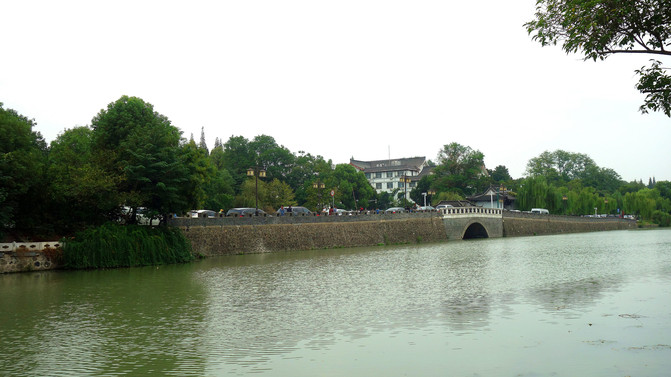
The houses in Yangzhou are full of flavor. Arc corners, different flowered windows, scattered eaves, art and romance are everywhere.

Follow Erdao River until you reach Siwangting Road.

Instead of walking on the main road, we continued to follow the bank of the Erdao River south, with clear water and green willows on the way.


Small water-friendly platforms appear from time to time, and citizens are directly fishing for fish.

Men sat around under the porch playing poker.

There are also handsome dogs that add a little fun to this peaceful picture.
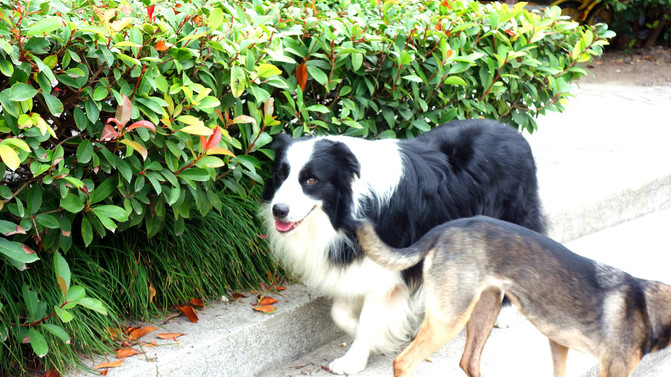
A bridge on Wenchang Middle Road spans the Erdao River, and we took the main road here-Wenchang Middle Road.

Ancient Mulan Yuan Stone Tower
Address: Office Building of Huizhange, Guangling District, Yangzhou City
There is a stone tower on the green island in the middle of Wenchang Middle Road. This is the Tang Dynasty stone tower-the ancient Mulan Yuan stone tower. The stone tower is five-story and six-corner, with Buddha statues on it. The stone fence boards of Sumizuo are carved with dragon, phoenix, cow, horse and other patterns. There are arches on the first, third and fifth floors. There are cornices between each floor. The eaves are engraved with patterns. The shape is simple and the style is dignified.

Continue walking on Wenchang Middle Road. Wenchang Road is Yangzhou's "Ten Miles Long Street" and the main road running through the east-west direction of Yangzhou's Urban area.

This road is full of flowers and beautiful.

Wenchang Pavilion
Address: Northeast corner of Golden Eagle International Shopping Center in Guangling District, Yangzhou City
Arriving at the intersection of Wenchang Middle Road and Wenhe Road is Wenchang Pavilion, a landmark building in Yangzhou. Wenchang Pavilion was built in the Ming Dynasty. The pavilion is 24.25 meters high and is an octagonal three-story brick-and-wood structure. It is a spire-like building, which is somewhat similar to the Hall of Prayer for Good Years at the Temple of Heaven in Beijing. The bottom floor of Wenchang Pavilion is octagonal, with arches on all sides, which are connected to the street. The second and third floors of the pavilion are frustum shaped with windows around the perimeter. The three-story double eaves shrink upward layer by layer to form an umbrella shape. After the tips are gathered, the top is closed with a treasure vase, and the top is an ellipsoid.

siwangting
Address: No. 9, Crab Lane, Siwangting Road, Guangling District, Yangzhou City
Wenchang Pavilion goes north and walks on Wenhe North Road. When you reach the intersection of Wenhe Road and Siwangting Road, you will find this Siwangting Pavilion, which was built in the 38th year of Jiajing of the Ming Dynasty (1559). The pavilion is of brick-wood structure, with eight sides and three floors, and a tiled roof. There are arches on all sides on the ground floor that are connected to the cross street, so it is called the "street crossing pavilion." The second and third floors are surrounded by simple window bars. There are eight flying horns on the eaves of the pavilion on each floor, and a total of 24 on the three floors. Each flying horn has a wind chime. The wind blows and rings the bell and the tone is melodious.

After a hundred meters of Siwang Pavilion, I returned to the hotel. There was a kind of fruit on the fruit stall at the entrance of the hotel. It looked like a chicken's mouth. This was the first time I had seen it and I was very curious.

The stall owner spoke with great difficulty in dialect for a long time, but I still didn't quite understand it. I only learned the original form of this thing after using a software. This fruit is called Jitou rice, also known as Suqian. It is a kind of gorgon euryale and one of the Eight Immortals of Water. It is the kernel of an aquatic herb in the water lily family. It is divided into two finished products: fresh and dried rice. Gorgon euryale is its dried rice. Gorgon euryale is recognized and often used for making sweet soups. This is what it looks like when it is fresh. It's super cute and has gained a little knowledge.

D2:
Walking method: Walking
Walking directions: Quan Ji Hotel (Slender West Lake Dongguan Street Store)-Zhenhuimen Ruins-Yechun (Yumou Store)-Yumou-Chici Tianning Temple-Caiyi Street-Dadongmen Bridge-Tanghuai-Yangzhou Eight Eccentrics Memorial Hall-Quan Ji Hotel (Slender West Lake Dongguan Street Store)
Take out the time to continue walking. Today, turn right from the Zhenhuaimen Ruins and walk east along the moat.

Next to the old North Gate Bridge is Yangzhou's famous Yechun.

Yechun (Yumatou Store)
Address: No. 8, Fenglexia Street, Hanjiang District, Yangzhou City
A class of Chinese classical buildings are built near the water, with natural water features and winning with water. Yechun Tea House has a history of 200 years. It was originally a private garden owned by Wang Yuyang, a poet of the Qing Dynasty. Yangzhou City planned to connect Shengqing Tea House, Xiangyinglang Tea House, Yechun Tea House, etc. along the lake to build a garden west of Qianlong Imperial Wharf. The old name of "Yechun Garden" is used.

The winding path, lake water, pavilions, and corridors are all built along the lake.

Half of the pavilion and corridor are built on the water, and people sitting in them are like ducks on a lake. Enjoy the most famous Yechun morning tea here, which is called "a must-do thing when you come to Yangzhou" by many strategies. In addition to eating, it is actually more unique to enjoy the beautiful scenery of the river while eating. It not only appreciates the local folk customs, but also enjoys the natural fun of simple customs.

The buildings in the pavilions and corridors are not large in size, but they are extremely layered.

In the south, there is a thatched thatthat The red lanterns hanging under the thatched hut complement each other with the clear water and green willows.

Yechun Garden is not only a place to eat, but also a rich garden landscape. The shadows of the trees are dancing and the lake is rippling. There are tall fir trees in the park, and pine and cypress, sycamore trees, locust trees, and ancient trees are buckling, covering the sky with thick shade. There are also Yangpai bonsai of different sizes and thousands of goldfish of various colors, adding to the fun of spring in the garden.

The water flows here to form a wide water surface, which is the confluence of the moat and the river water of the small Qinhuai River in the city. Continuing to the left is the moat, and south of the drilling bridge hole is the Xiaoqinhuai River.

The thatched pavilions stand quietly next to the water, the colorful dragon boats are parked quietly, and the white stone fences on the riverside trails surround the water, creating the scenery according to the situation and bending freely. The green forests on the river bank completely block the noisy road, creating an artificial static area.

There are several steps going up parallel to the river. A section of mound is paved with rocks, and a small pavilion is built next to the water.

At this time, people can only look at the river water and Yechun Garden from a different angle. The banks are undulating and colorful, with lush bamboo and wood, and clear water reflecting the belt.

Yumou
Address: No. 8, Fenglexia Street, Hanjiang District, Yangzhou City
The narrow moat has been completely covered by flowers and trees, making it particularly deep and profound. The royal horse's head at your feet is hidden in the green. Tianning Temple on the dock is a famous temple in Yangzhou and was built in the Jin Dynasty. Emperor Kangxi made five southern patrols, and each time he lived in the palace in the west garden of Tianning Temple. Under the temple was the dock for boarding and boarding dragon boats.

The Royal Pier is made of bluestone. After more than 200 years of wind and rain, it is intact and as strong as ever. It is now the starting point of the "Qianlong Water Tour Route".

Ji Ci Tianning Temple
Address: No. 3 Fengle Street, North of Yangzhou City
The vermilion walls and the gate of the Dahong Temple were given to Tianning Temple. It was built in the Eastern Jin Dynasty. It was named "Tianning Zen Temple" during the Zhenghe Period of the Northern Song Dynasty. It was rebuilt in the Hongwu Year of the Ming Dynasty. It ranked first among the eight ancient temples in Yangzhou in the Qing Dynasty. Emperor Kangxi once stayed here during his southern tour. The mountain gate hall of Tianning Temple has a single eaves on the top of the mountain, with a wide surface of three rooms. The upper end of the mountain gate is inlaid with a stone forehead of "Ji Tianning Temple". There is a simple stone lion in front of the mountain gate hall on the east and west sides.
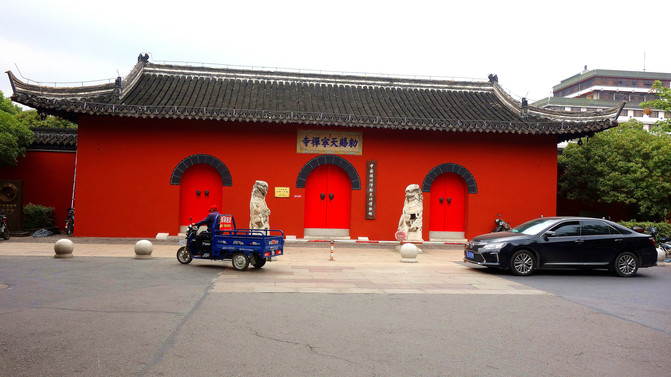
As soon as I entered the door, the rows of osmanthus trees and flowers were in full bloom, and the fragrance filled the garden was charming.

The layout of the Tianning Temple building complex is symmetrical and rigorous, and against the backdrop of the lush trees, it looks even more majestic. After repeated renovations, the temple now has Shanmen Hall, Tianwang Hall, Daxiong Hall, Huayan Pavilion, east and west corridors, auxiliary halls, etc. The current Tianning Temple has been integrated into the Yangzhou Buddhist Culture Museum in China.

Unfortunately, we went on Monday and the museum was closed. We couldn't enter the indoor tour, so we could only walk around the outside to see the temple architecture and garden scenery.

Tianwang Hall is also a single eaves resting on the top of the mountain, with corridors on all sides,

There is a big square, with two huge ginkgo trees on the square, and the Daxiong Hall is located on the base of the platform. Inside a glass cover under the ginkgo tree is the stele of Qianlong's "Southern Tour".

A stone turtle lies under another ginkgo tree.

A hall with double eaves on top of a hill

There is a large square between the Daxiong Hall and the Tianwang Hall.

The bronze statue of the "Eight Eccentrics of Yangzhou" on the square, a sculpture similar in size to a real person recreates the scene of the "Eight Eccentrics of Yangzhou" dating activities back then. The "Eight Eccentrics of Yangzhou" are congenial and similar in interests. They often gather at Tianning Temple to discuss scriptures, talk about arts, and practice Zen and display their skills.

The Ten Thousand Buddha Building behind the Daxiong Hall is a seven-jacketed and three-story Sutra Building, which is large-scale.

The Wanfo Tower is the first temple in Yangzhou. The flowers and trees in front of the courtyard are deep. At this time, the osmanthus blossoms and sweetens the heart and lungs.

The unknown little red fruit adds a little color to the simple and elegant picture.

This tall Huayanbao Pavilion with blue bricks and black tiles looks much simpler than the red palace.


When we reached the northeast corner, there was actually a "Zheng Banqiao Memorial Hall." Unfortunately, the museum is closed. You can only see the green bamboo and elegant blue brick walls outside the door to symbolize Zheng Banqiao's quality and style!

In addition to the magnificent temples on the central axis of the temple, there are east and west corridors on both sides of the temple, about 100 meters long. On one side of the corridor are verandas and auxiliary halls.

The road between the auxiliary hall and the main hall is paved with blue bricks. The scattered vegetation on both sides of the road has red flowers and green leaves, which is very beautiful.

In autumn, except for the osmanthus planted in the garden, the garden is full of fragrance during this season. There are also golden grapefruits and red persimmons hanging all over the branches.

In the autumn harvest season, the trees are full of golden pomelo trees.

The houses in the auxiliary hall are now all antique sales shops. This is one of the birthplaces of Yangzhou Antique Market. Antique dealers operate in shops in the rooms on both sides of Tianning Temple, where antique enthusiasts who like Taobao search for their favorite items.

And people like me just watch the fun.








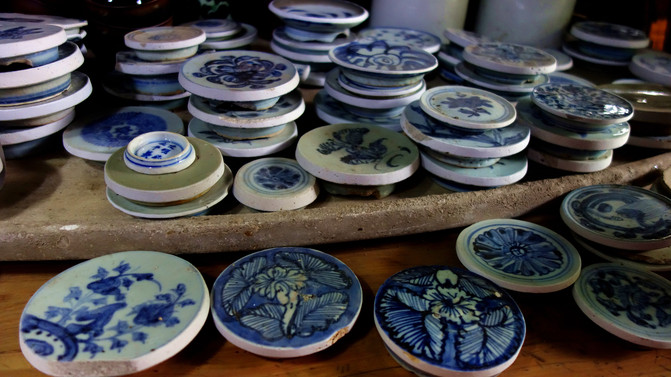
There are all kinds of antiques under the porch and the door


There is a large water tank in front of the shop under the corridor, with various coins flashing in the tank.

Maybe it was Monday? There are very few tourists here. It is said to be a relatively large antique market in Yangzhou. Although there are many shops, their popularity is low. Even many shops are guarded by iron generals. There is no lively scene like the imagined big antique market. Maybe it is not what it used to be. Maybe it is because it is not their day for the market that their popularity is cold!


Looking back at Tianning Temple, it is not the same as the traditional temple we imagined. It is not as solemn as other temples, but more like a residential building. The museum was closed on Monday, and the museum was not able to visit and lacked some of its essence. However, because the overall atmosphere of the temple is very peaceful, it is also very pleasant to take a walk here.

Exit Tianning Temple and continue walking along Tianning Gate Street that runs north-south in front of the door.

Yangzhou's original streets and alleys
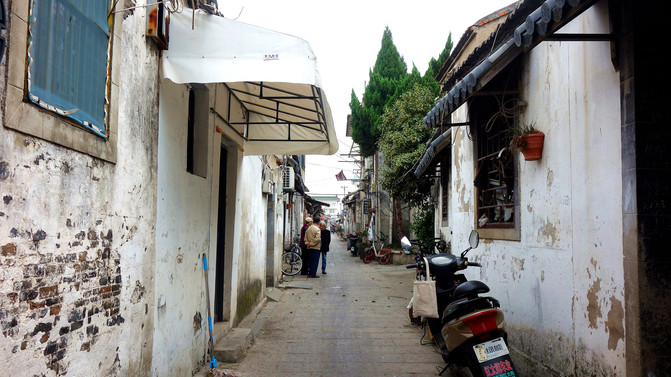
It can be seen from the ordinary small courtyards that Yangzhou people know how to live.

This small courtyard in the small streets and alleys contains various traditional stone carvings, Chinese-style buildings, and Chinese-style courtyard. This is the activity center of Yangzhou of the Jiangsu Province Collectors Association.


caiyijie
Address: Guangling District, Yangzhou City
The southern end of Tianningmen Street meets Caiyi Street. Caiyi Street, when you hear the name, you know that it is an ancient street full of stories. It is an important east-west passage connecting Wenhe Road and Guoqing Road. We did not walk towards the lively Dongguan Street on the east side, but followed Caiyi Street west.

Dadongmen Bridge
Address: Guangling District, Yangzhou City
An ancient bridge built in the Ming Dynasty-Dadongmen Bridge connects Dadongmen Street and Caiyi Street.

Stand on the Dadongmen Bridge and watch the scenery on both sides of the Xiaoqinhuai River. The Xiaoqinhuai River is an inland river running north-south in Yangzhou City and flows into the ancient canal. Twenty-four years after Jiajing in the Ming Dynasty, a new city was built in Yangzhou. It became a boundary river and an important road between the new and old cities, and began to prosper. The Xiaoqinhuai River and the neighborhoods on both sides were once the most prosperous area in Yangzhou in the Qing Dynasty and were witnesses to the rise and fall of the ancient city in the Ming and Qing Dynasties.

It can be seen from a long trail on the left side of the coast that the terrain here is relatively high, which is the highest part of the ancient city of Yangzhou.

Yangpai Gate Tower, flying eaves Pavilion, horse head wall, clear water brick wall, etc., constitute important landscape features along Caiyi Street. As the National Day approaches, every shop is flying with a small national flag, giving a very National Day atmosphere.

Yangzhou has Zhu Ziqing's former residence. I have always wanted to visit it. I visited Yangzhou twice last year, but unfortunately I failed to do so. The first time we walked to the entrance of the alley, and tourists who left the alley told us not to go because it was under renovation. The second time I walked around there, it was around 5 o'clock in the afternoon and I got off work. This time I still wanted to, but when I thought that the museum might be closed on Monday, I found a phone number online to inquire. Are you a little excited? You picked up the phone and asked the other party: "I want to go to Zhu Ziqing's house..." At that time, he made his companion laugh to the ground. The answer I got was as expected. Missed again. There was still some time, and I thought I might go to the Eight Eccentrics Memorial Hall to have a look. Although I also have concerns about closing the museum on Monday, because it is in Tuoling Lane near the hotel and the alley is only 200 meters away, let's try it!

tanghuai
Address: Guangling District, Yangzhou City
A few steps into Tuoling Lane, there is a enclosed locust tree. The strange thing is that the trunk of the locust tree is haggard, but the crown is still like a pavilion. At one glance, it can be seen that it is an ancient tree that has experienced many vicissitudes. An old man enthusiastically led us and explained the story of the locust tree to us.

It turns out that this is a acacia tree. On a white marble stone tablet on the bluestone wall of the locust courtyard, the word "Tang locust" is engraved, and the experience of this tree is told. It turns out that this Tang locust tree was recorded in the "Biography of the Prefect of Nanke" written by Li Gongzuo of the Tang Dynasty. --It is the "Nanke" in "Nanke Dream".

Yangzhou Eight Eccentrics Memorial Hall
Address: No. 18, Tuoling Lane, Guangling District, Yangzhou City
Continue walking along the alley and not far away is the Yangzhou Eight Eccentrics Memorial Hall. What surprised us was that the place was still open on Monday, so it was so great to have free admission!

This memorial hall relies on the outer coat of the Western Temple, Jin Nong's former residence. The Western Temple was originally a sheltered temple built along the river in the Sui Dynasty. Li Shimin, Taizong of the Tang Dynasty, nicknamed it "Western Zen Temple". It was moved here in the first year of Yongzhen of the Tang Dynasty (805) and was later destroyed in the war of war. The present "Western Temple" was rebuilt in the fifth year of Hongwu of the Ming Dynasty (1372). After restoration, it became a memorial hall for the Eight Eccentrics of Yangzhou. It opened on November 22, 1993, the 300th anniversary of Zheng Banqiao's birth.

Lift your feet into the foyer. There is a lacquered screen in the middle, and on the front of the screen is a poem about the Eight Eccentrics of Yangzhou in the Collection of Tianyin Hall by Ling Xia, a painter of the late Qing Dynasty.

On the back is Zheng Banqiao's calligraphy work "Singing Ancient Yangzhou".

The memorial hall mainly consists of six major parts: lobby, corridor, main hall, exhibition hall, Jinnong residence room and East Garden

The existing ancient building Nanmu Hall of the Ming Dynasty is the main exhibition hall of Yangzhou Eight Eccentrics Memorial Hall. The Ming Dynasty hall on top of the mountain with double eaves is also the oldest existing hall building in Yangzhou. There is a huge iron wok in the center of the courtyard in front of the hall, which has a history of 14,500 years. Several groups of seemingly randomly combined sculptures have different styles, and the enlarged red seals are particularly eye-catching.

The main exhibition hall is now holding an exhibition of Zhang Zhen's oil paintings by "Remembering the original intention, Remembering the Party's Heart, and Revisiting the Long March of the Red Army."

Revisiting the Long March of the Red Army, experiencing the hardships of the Long March, remembering the revolutionary martyrs, and inheriting the red spirit are the core of this exhibition.

The 40 oil paintings on display in the exhibition are masterpieces created by Zhang Zhen's family starting from Ruijin and following the route of the Red Army's Long March, which lasted several months to retrace the Red Army's Long March.

These paintings have distinctive themes, bright colors, fresh painting styles and profound artistic conception.

There are long corridors on the east and west of the main hall.

The corridor displays the calligraphy and paintings of the Eight Eccentrics of Yangzhou, expressing the individual creation of each painter and painter.

These calligraphy, painting and stone inscriptions of the "Eight Eccentrics of Yangzhou" reproduce the charm of traditional Chinese stele inscriptions.

Carved stone tablets surrounded by green bamboo.

The entire memorial hall is full of the temperament of Jiangnan gardens.

The building has a strong contrast in color tones, with white walls matched with dark red lacquer columns. All kinds of flower windows on the white walls are full of aura. The green bamboo is naturally framed in the window frame and proudly stretches.

Garden elements are everywhere, a perfect combination of natural scenery and humanistic paintings.

Small pavilions, rockery, green bamboos and cypresses coexist with elegance and tenacity. Create a clean and quiet artistic conception.

The blue-gray brick walls, the roof is covered with black tiles, the deep vermilion gate, and the simple and solemn hall is guarded by a ginkgo tree and a jade flower behind the hall.

The tall thousand-year-old ginkgo tree has both height and depth, and exudes extraordinary charm in obscurity.

Jin Nong, the representative figure of the Eight Eccentrics, lived in the temple in his later years. In the northwest corner behind the main hall of the Western Temple is Jinnong's residence room. Jin Nong's lofty and lonely figure in his later years was in this small courtyard.

The jade flower tree at the door of Jinnong's residence room

There is a patio after the entrance. On both sides of the patio are houses. In the hall in front of the patio, there is a couplet hanging at the entrance of the hall: "Drink good wine with the young man; get a glimpse of the ancient books."

The word "Fu" hangs high on the wall on one side.

The wing hall is now a prestigious Yangzhou Cultural Museum. There are some wooden handicrafts inside. The prices are very reasonable, and you can find things you like inside. Yangzhou's sandalwood combs are 100 yuan for five. They are affordable and exquisite. I bought some to send them back to my best friend.

The courtyard is not large, but it appears extremely rich layer by layer through the building.

Looking at the scenery in the courtyard through the door, the beautiful garden landscape and the profound cultural heritage complement each other.

The building with white walls and blue tiles is quietly elegant in the small enclosed courtyard. There are low green holly trees on the gradually yellowing lawn, tall and straight green ginkgo trees, and stones with the calligraphy of the eight monsters as design elements are scattered on the grass, which is very eye-catching. It's not very big, but it's very interesting. It's not a big place, so it's worth spending a little time around.

After a few days of work in Yangzhou, he also took a break from his busy work and walked in this familiar city. Whether you come to Yangzhou for a purposeful walk or an inadvertent walk, you will be pleasantly surprised. Yangzhou is a city worthy of reading and a city with flavor.

The "Hulk" stopped quietly on the platform like a streamlined line. Many people have the nostalgic plot of green leather cars, and the appearance of the Hulk attracted a lot of camera flashes.

This is the CR200J Fuxing power-concentrated EMU train between Nanjing and Qidong on the Ningqi Railway that has just been completed. I remember that to go to Qidong in July, you still need to transfer buses in Nantong. In two months, you can ride the "Green Giant" traveling directly to Qidong with a speed of 160 kilometers per hour.

See you again in Yangzhou!
Previous Article:In autumn, Yangzhou discovers a different niche way to avoid crowds
Next Article:All delicious food and fun are collected, five "musts" for Yangzhou tourism
